Using Ultrasonic Pulse and Artificial Intelligence to Investigate the Thermal-Induced Damage Characteristics of Concrete
Abstract
Featured Application
Abstract
1. Introduction
2. Mechanical Behavior of Thermal-Induced Damage in Concrete
2.1. Heating Rate (Rheat)
2.2. Maximum Temperature (Tmax)
2.3. Exposure Time (Etime)
2.4. Cooling Method (Mcool)
3. Thermal-Solid Damage Experiment
3.1. Thermo-Induced-Damage Concrete Specimen
3.2. Stress-Induced Damage Test (Uniaxial Compressive Test)
3.3. Ultrasonic Pulse Measurement
4. Machine Learning
5. Results and Discussions
5.1. Experimental Results
5.1.1. Relation of Loading Behavior and Heat Temperature
5.1.2. Damage Characteristics Examined Using the Wave Velocity Ratio
5.2. Artificial Intelligence Analysis
6. Conclusions
Author Contributions
Funding
Acknowledgments
Conflicts of Interest
References
- Tovey, A.K. Assessment and repair of fire-damaged concrete structures-an update. Spec. Publ. 1986, 92, 47–62. [Google Scholar]
- Luo, B.-Y. Fire-Resistance Property of Reinforced Lightweight Aggregate Concrete Wall. Master’s Thesis, National Chung Hsing University, Taichung, Taiwan, 2008. [Google Scholar]
- Arioz, O. Effects of elevated temperatures on properties of concrete. Fire Saf. J. 2007, 42, 516–522. [Google Scholar] [CrossRef]
- Janotka, I.; Nürnbergerová, T. Effect of temperature on structural quality of the cement paste and high-strength concrete with silica fume. Nucl. Eng. Des. 2005, 235, 2019–2032. [Google Scholar] [CrossRef]
- Del Rio, L.; Jimenez, A.; Lopez, F.; Rosa, F.; Rufo, M.; Paniagua, J. Characterization and hardening of concrete with ultrasonic testing. Ultrasonics 2004, 42, 527–530. [Google Scholar] [CrossRef] [PubMed]
- Kheder, G. A Two stage procedure for assessment of in situ concrete strength using combined non-destructive testing. Mater. Struct. 1999, 32, 410–417. [Google Scholar] [CrossRef]
- Nash’t, I.H.; A’bour, S.H.; Sadoon, A.A. Finding an unified relationship between crushing strength of concrete and non-destructive tests. In Proceedings of the Middle East Nondestructive Testing Conference & Exhibition, Bahrain, Manama, 27–30 November 2005. [Google Scholar]
- Turgut, P. Research into the correlation between concrete strength and UPV values. NDT Net 2004, 12, 1–9. [Google Scholar]
- Trtnik, G.; Kavčič, F.; Turk, G. Prediction of concrete strength using ultrasonic pulse velocity and artificial neural networks. Ultrasonics 2009, 49, 53–60. [Google Scholar] [CrossRef] [PubMed]
- Hola, J.; Schabowicz, K. New technique of nondestructive assessment of concrete strength using artificial intelligence. NDT E Int. 2005, 38, 251–259. [Google Scholar] [CrossRef]
- Anderberg, Y.; Thelandersson, S. Stress and Deformation Characteristics of Concrete at High Temperatures; Lund University: Lund, Sweden, 1976. [Google Scholar]
- Kodur, V. Properties of concrete at elevated temperatures. ISRN Civ. Eng. 2014, 2014. [Google Scholar] [CrossRef]
- Mohamedbhai, G. Effect of exposure time and rates of heating and cooling on residual strength of heated concrete. Mag. Concr. Res. 1986, 38, 151–158. [Google Scholar] [CrossRef]
- ASTM. Standard Test Method for Pulse Velocity through Concrete; Annual Book of ASTM Standards; American Society for Testing and Materials: West Conshohocken, PA, USA, 1999. [Google Scholar]
- Malhotra, V.M.; Carino, N.J. Handbook on Nondestructive Testing of Concrete, 2nd ed.; CRC Press: Boca Raton, FL, USA, 2003. [Google Scholar]
- Nazarian, S.; Stokoe, K. Evaluation of Moduli and Thicknesses of Pavement Systems by Spectral-Analysis-of-Surface-Waves Method; Research Rep. 256-4; Center for Transportation Research, University of Texas: Austin, TX, USA, 1983; pp. 1–138. [Google Scholar]
- Chary, K.; Sarma, L.P.; Lakshmi, K.P.; Vijayakumar, N.A.; Lakshmi, V.N.; Rao, M. Evaluation of engineering properties of rock using ultrasonic pulse velocity and uniaxial compressive strength. In Proceedings of the National Seminar on Non-destructive Evaluation, Hyderabad, India, 7–9 December 2006. [Google Scholar]
- Soroush, H.; Qutob, H. Evaluation of rock properties using ultrasonic pulse technique and correlating static to dynamic elastic constants. In Proceedings of the 2nd South Asian Geoscience Conference and Exhibition, GEOIndia, New Delhi, India, 12–14 January 2011. [Google Scholar]
- Goodman, R.E. Introduction to Rock Mechanics; John Wiley & Sons: New York, NY, USA, 1989. [Google Scholar]
- Hall, M.; Frank, E.; Holmes, G.; Pfahringer, B.; Reutemann, P.; Witte, I.H. The WEKA data mining software: An update. ACM SIGKDD Explor. Newsl. 2009, 11, 10–18. [Google Scholar] [CrossRef]
- Witte, I.H.; Frank, E.; Hall, M.A. Data Mining: Practical Machine Learning Tools and Techniques, 3rd ed.; Morgan Kaufmann: Burlington, MA, USA, 2011. [Google Scholar]
- Naus, D.J. The Effect of Elevated Temperature on Concrete Materials and Structures—A Literature Review; Oak Ridge National Laboratory (ORNL): Oak Ridge, TN, USA, 2006.
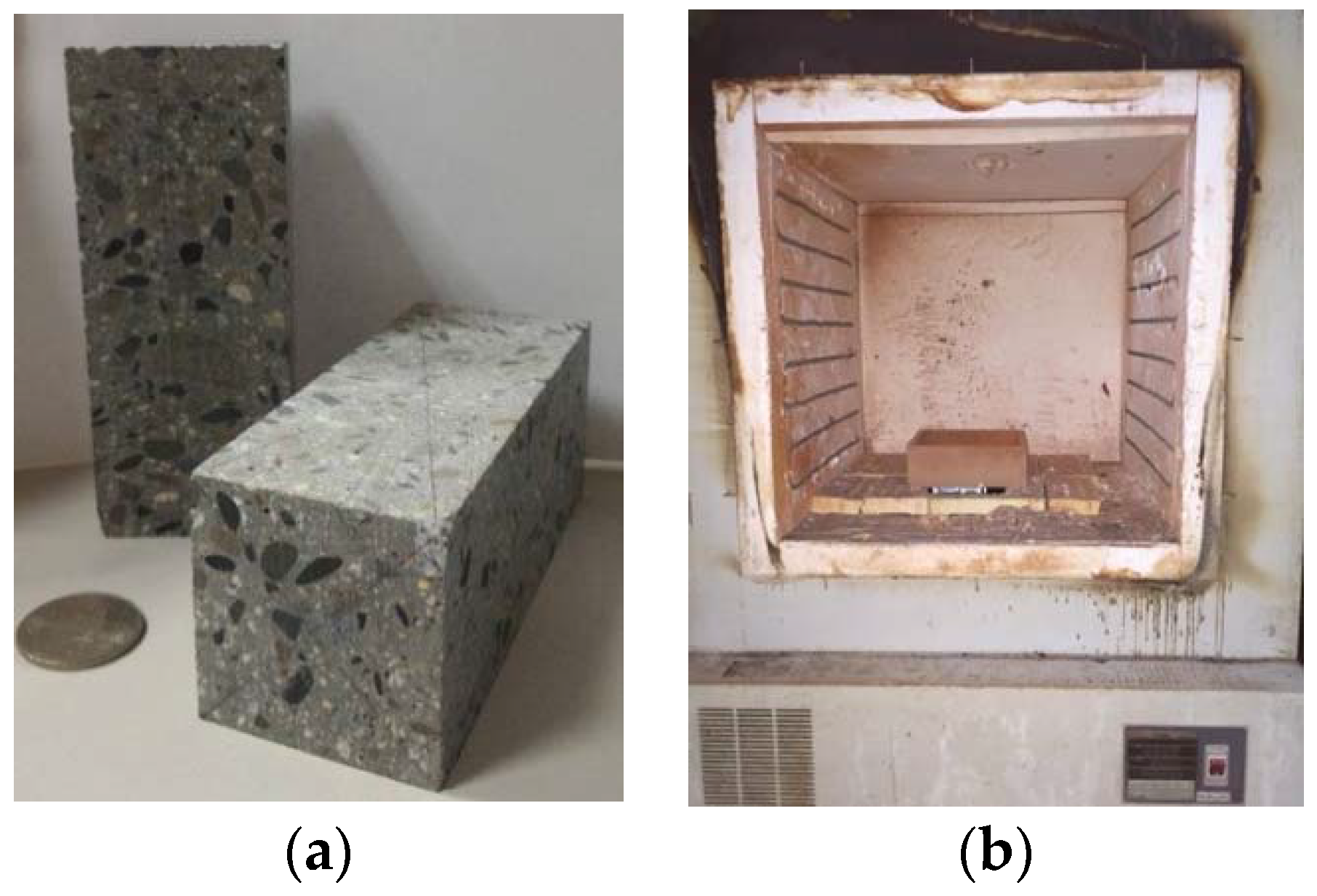
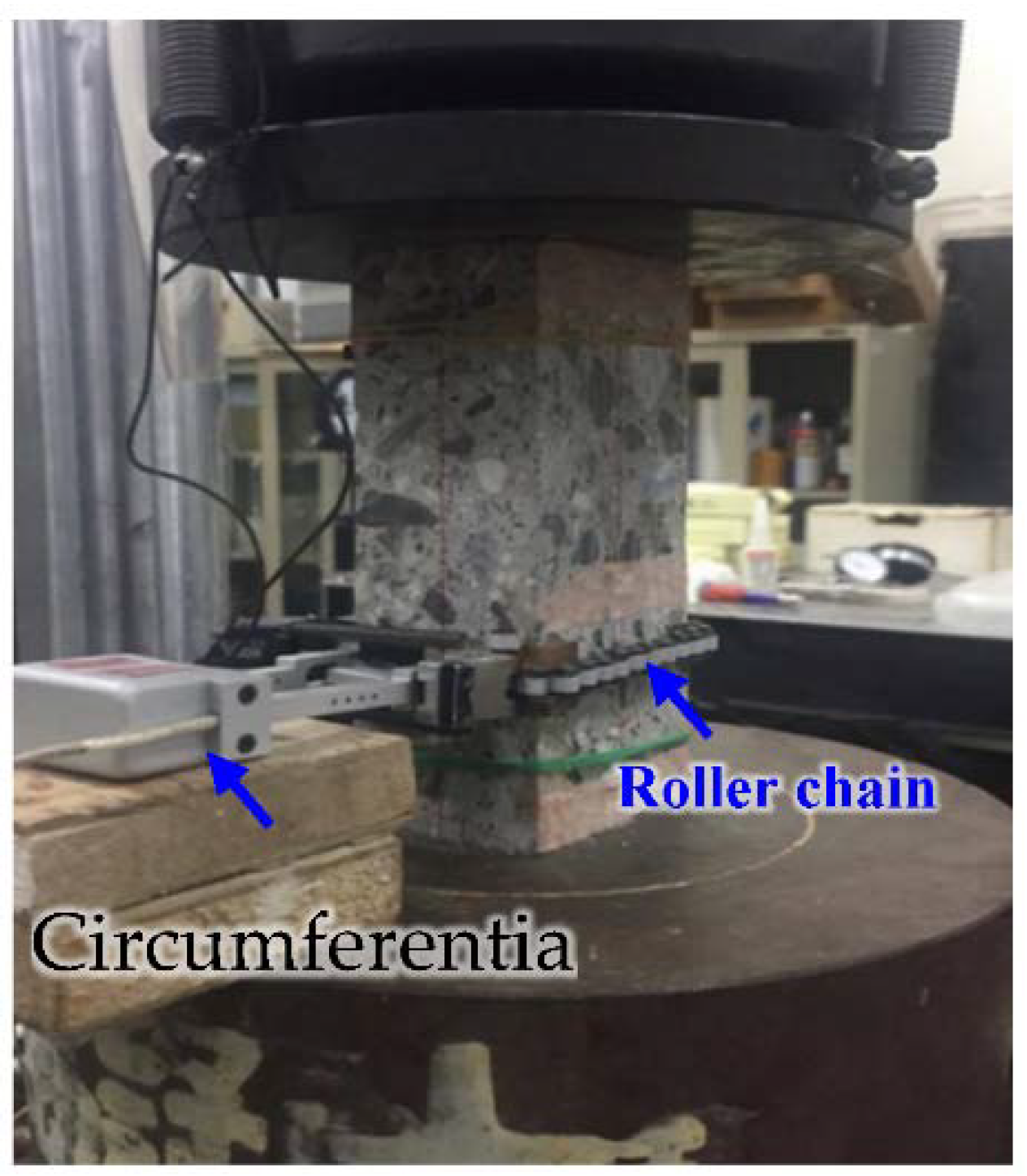
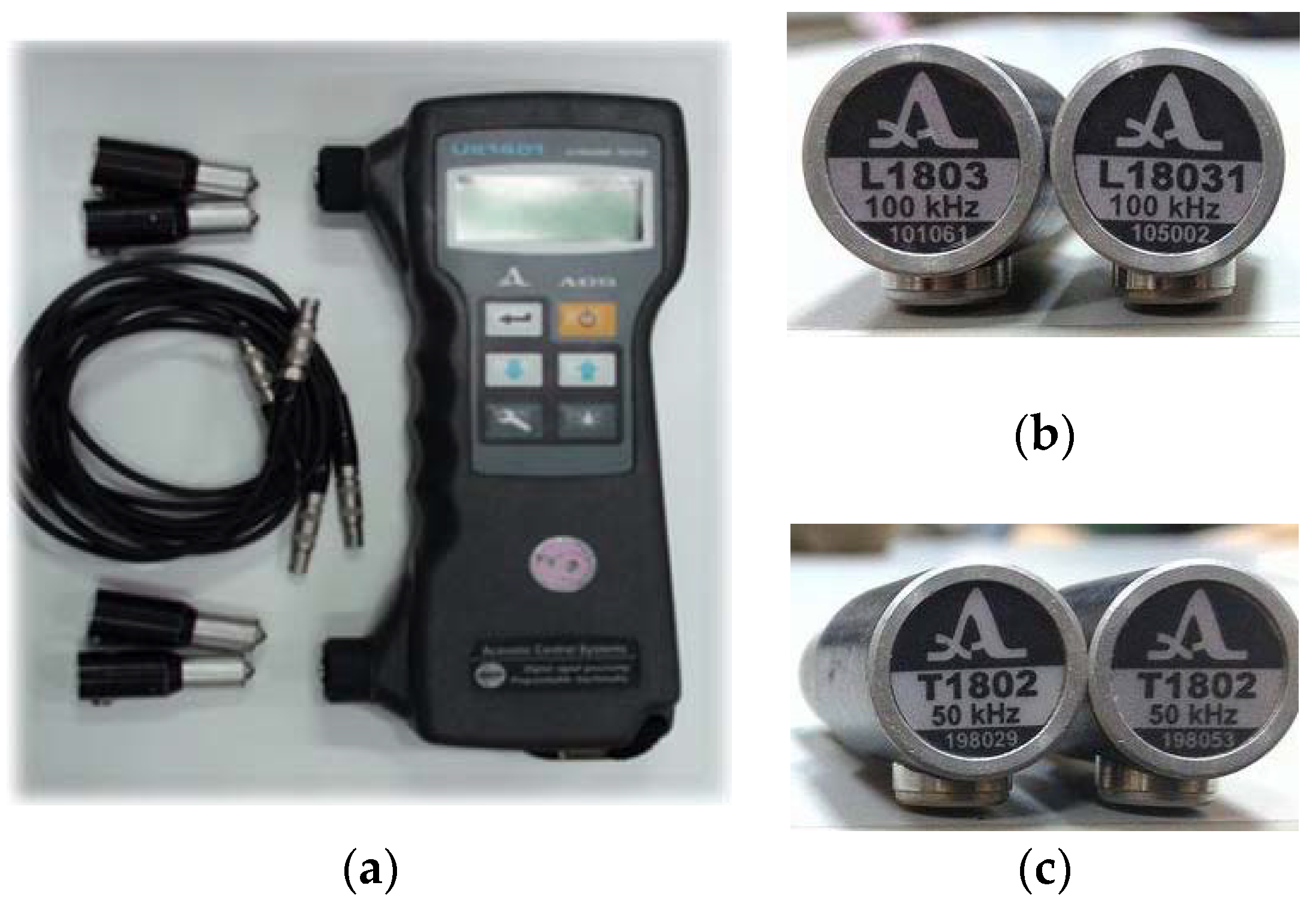
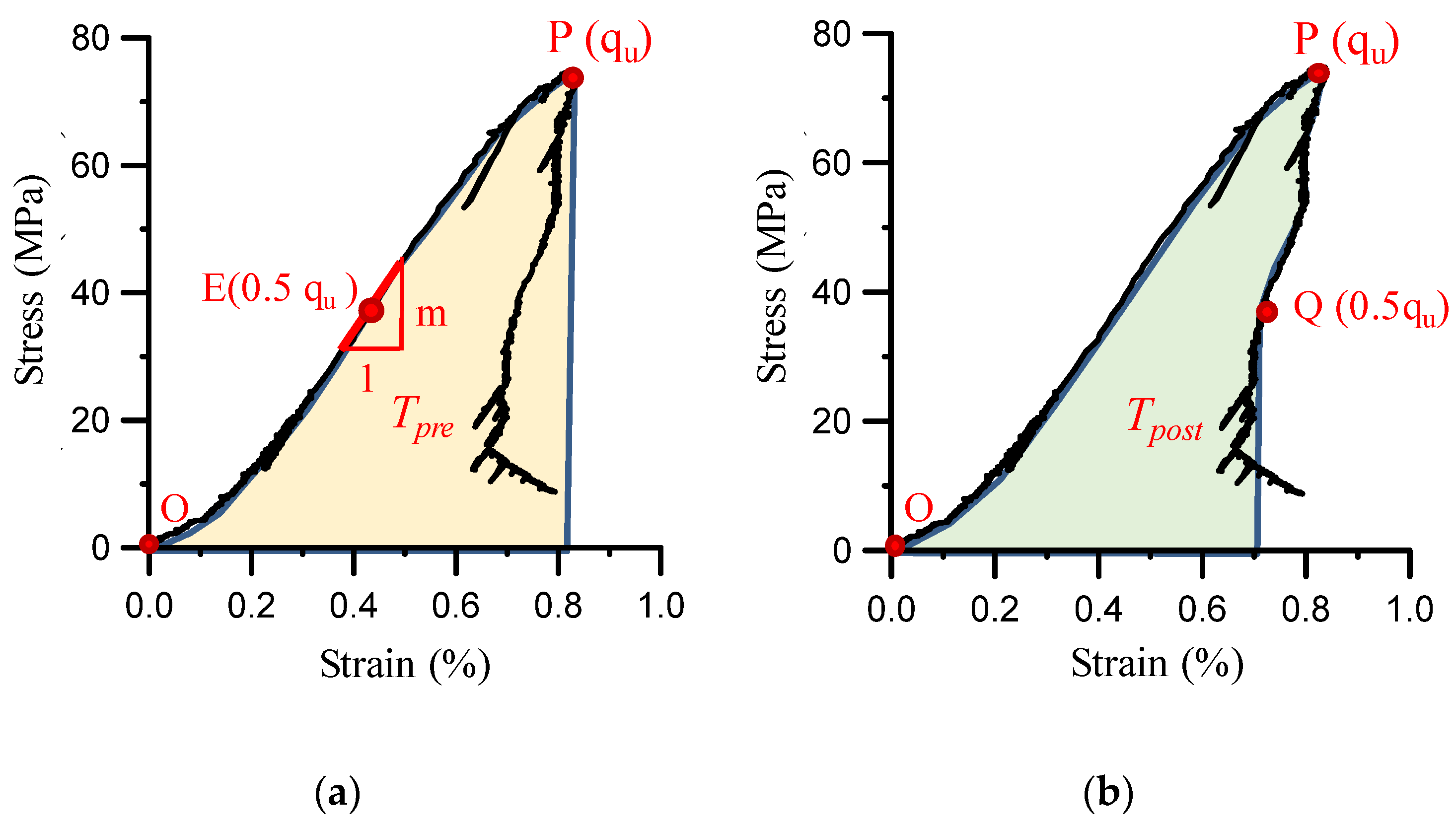
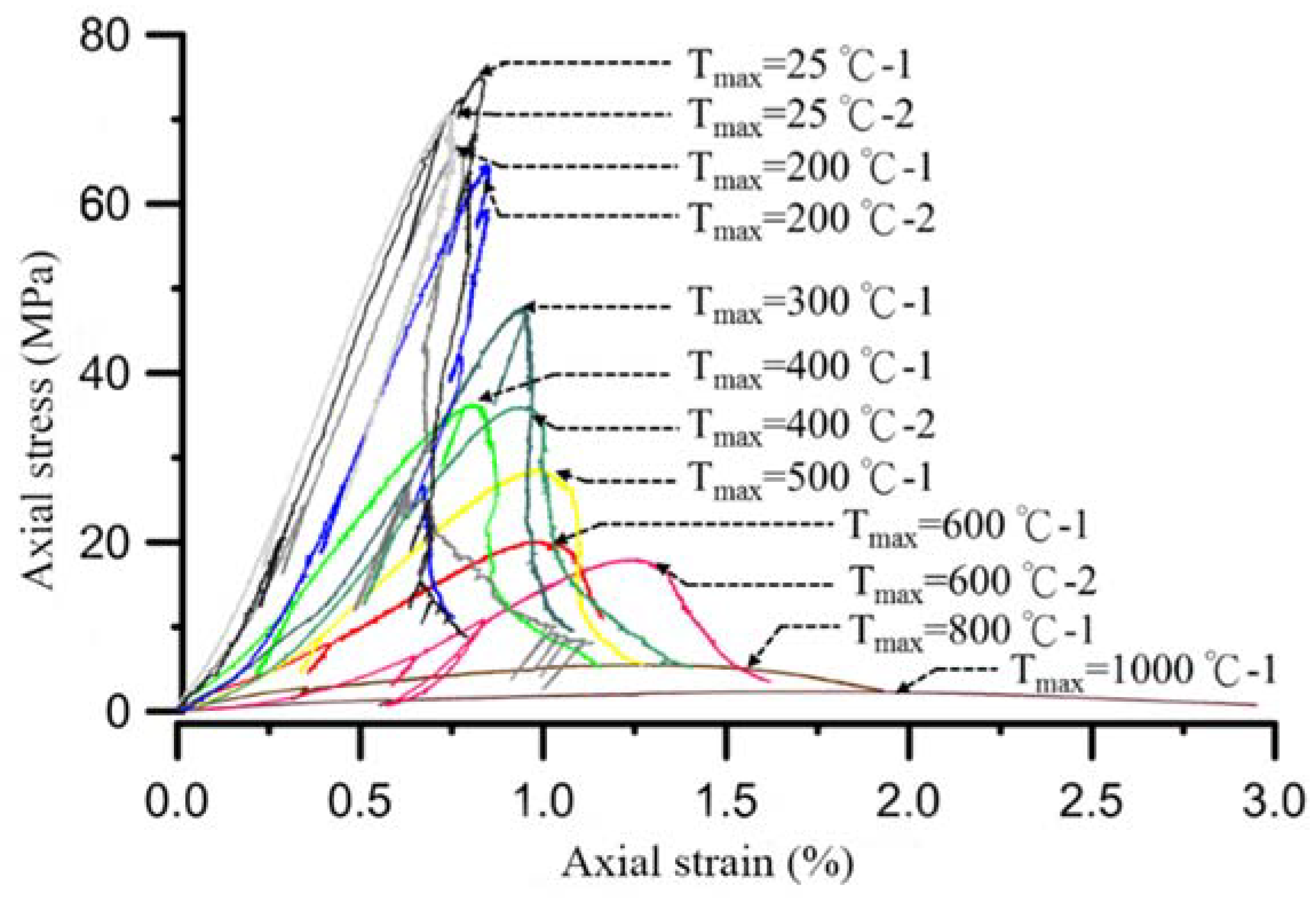

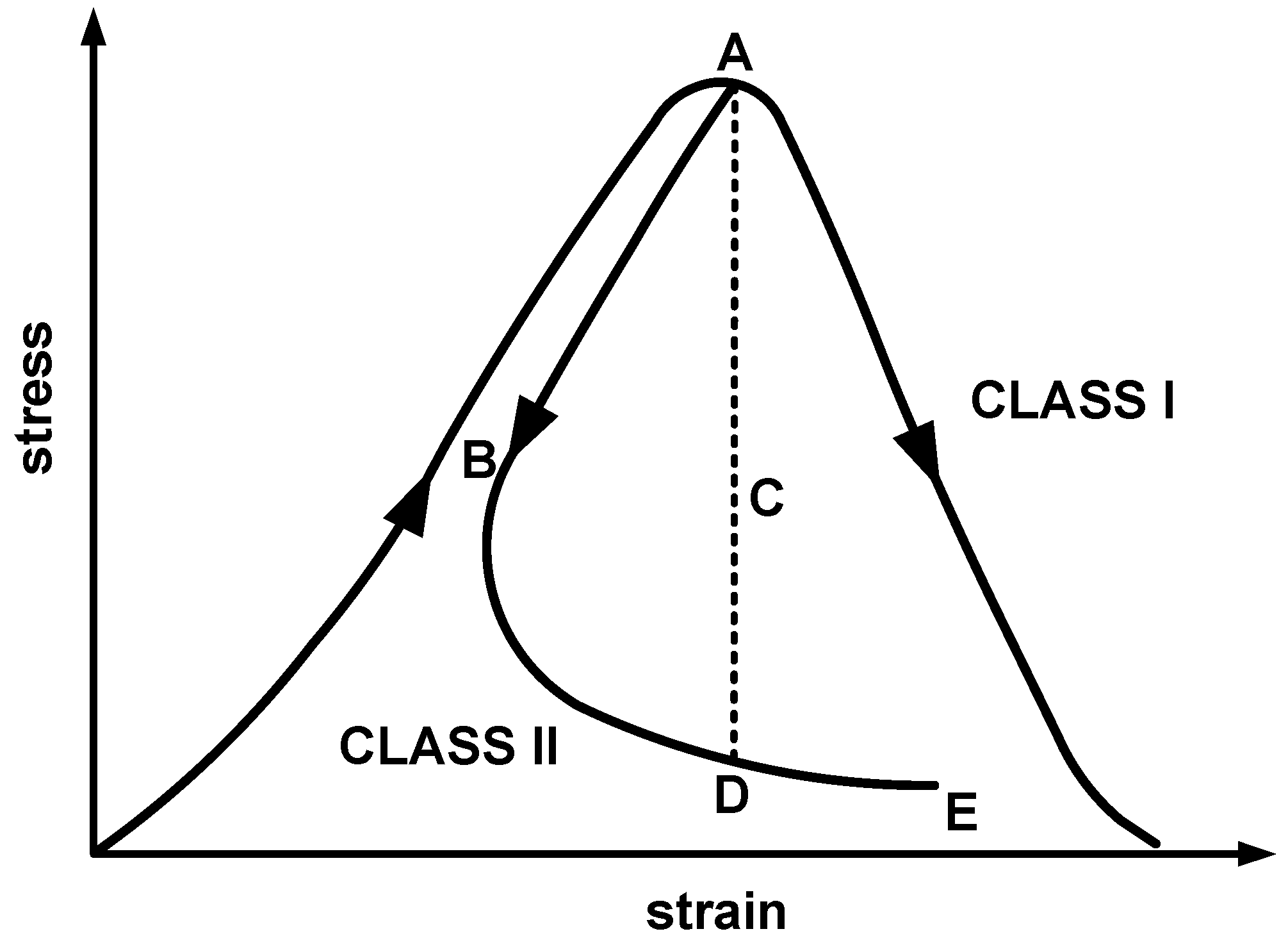


| Material | Concrete | qu = 70 MPa (designed strength) | |
| Thermal-Solid Damage Method | thermal-induced | heating rate | Rheat = 5 °C/min |
| maximum temperature | Tmax = 25, 200, 300, 400, 500, 600, 800, 1000, 1200 °C | ||
| exposure time | Etime = 300 min | ||
| cooling method | Mcool:cool down in furnace | ||
| stress-induced | uniaxial compressive test | obtaining the stiffness, strength, and toughness after thermal-induced damage | |
| Measurement | ultrasonic pulse (UP) | measure: VS, VP, VS/VP | |
| Input Variables | Output Variables | ||||
|---|---|---|---|---|---|
| Wave Velocity Ratio | Stiffness | Strength | Pre-Peak Toughness | Post-Peak Toughness | |
| designed strength | −0.14 | 0.23 | 0.49 | 0.37 | 0.24 |
| rate of heating | - | - | 0.19 | - | - |
| maximum temperature | 0.78 | −0.87 | −0.65 | −0.7 | −0.73 |
| exposure time | 0.17 | −0.42 | −0.41 | −0.4 | −0.22 |
| Output Variables | Stiffness | Strength | Pre-Peak Toughness | Post-Peak Toughness |
|---|---|---|---|---|
| wave velocity ratio | −0.91 | −0.89 | −0.84 | −0.67 |
| stiffness | 0.99 | 0.94 | 0.8 | |
| strength | 0.97 | 0.84 | ||
| pre-peak toughness | 0.9 |
© 2018 by the authors. Licensee MDPI, Basel, Switzerland. This article is an open access article distributed under the terms and conditions of the Creative Commons Attribution (CC BY) license (http://creativecommons.org/licenses/by/4.0/).
Share and Cite
Chen, L.-H.; Chen, W.-C.; Chen, Y.-C.; Lin, H.-J.; Cai, C.-F.; Lei, M.-Y.; Wang, T.-C.; Hsu, K.-W. Using Ultrasonic Pulse and Artificial Intelligence to Investigate the Thermal-Induced Damage Characteristics of Concrete. Appl. Sci. 2018, 8, 1107. https://doi.org/10.3390/app8071107
Chen L-H, Chen W-C, Chen Y-C, Lin H-J, Cai C-F, Lei M-Y, Wang T-C, Hsu K-W. Using Ultrasonic Pulse and Artificial Intelligence to Investigate the Thermal-Induced Damage Characteristics of Concrete. Applied Sciences. 2018; 8(7):1107. https://doi.org/10.3390/app8071107
Chicago/Turabian StyleChen, Li-Hsien, Wei-Chih Chen, Yao-Chung Chen, Hsin-Jung Lin, Chio-Fang Cai, Ming-Yuan Lei, Tien-Chih Wang, and Kuo-Wei Hsu. 2018. "Using Ultrasonic Pulse and Artificial Intelligence to Investigate the Thermal-Induced Damage Characteristics of Concrete" Applied Sciences 8, no. 7: 1107. https://doi.org/10.3390/app8071107
APA StyleChen, L.-H., Chen, W.-C., Chen, Y.-C., Lin, H.-J., Cai, C.-F., Lei, M.-Y., Wang, T.-C., & Hsu, K.-W. (2018). Using Ultrasonic Pulse and Artificial Intelligence to Investigate the Thermal-Induced Damage Characteristics of Concrete. Applied Sciences, 8(7), 1107. https://doi.org/10.3390/app8071107




